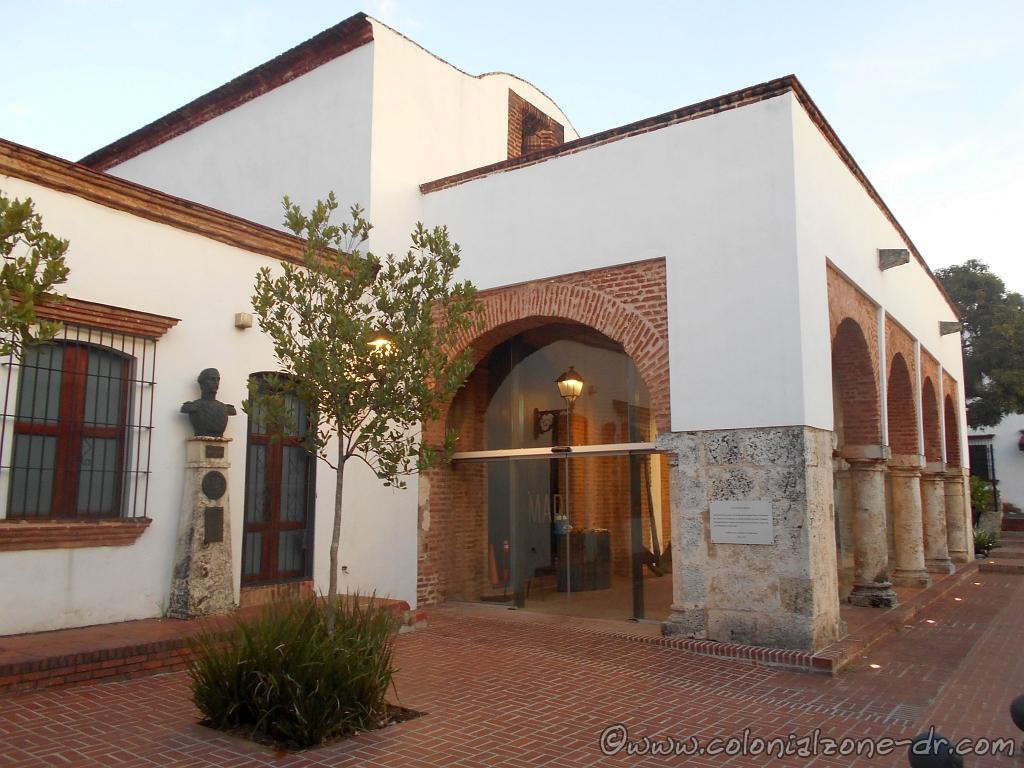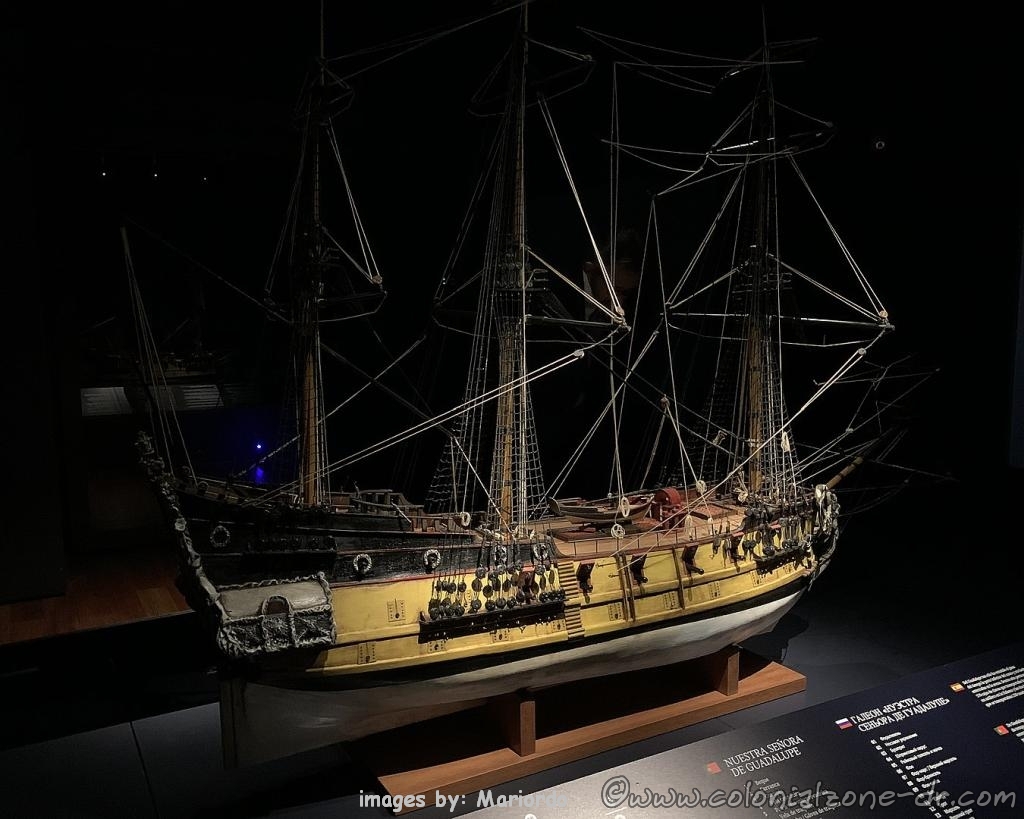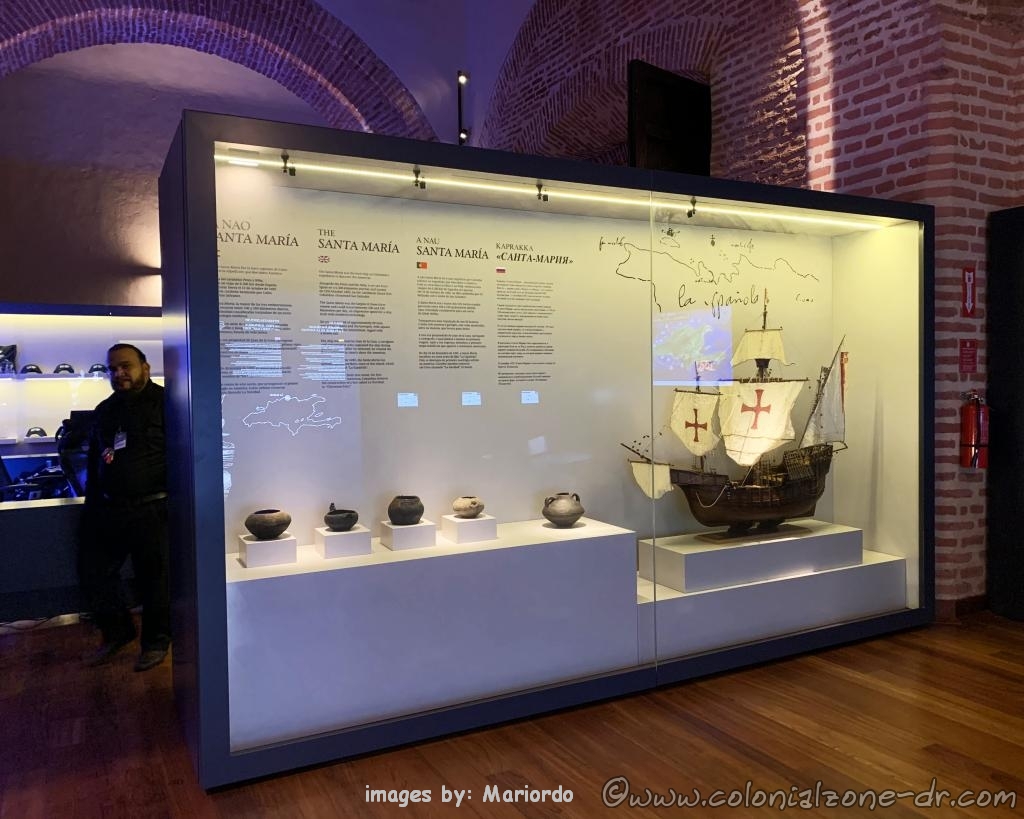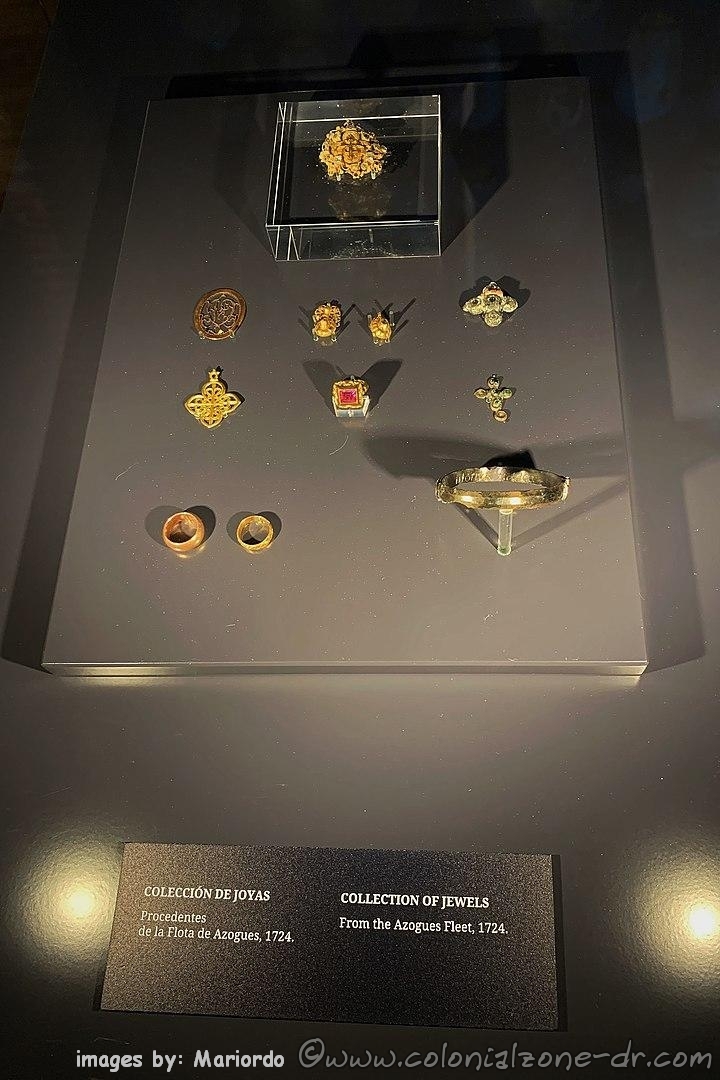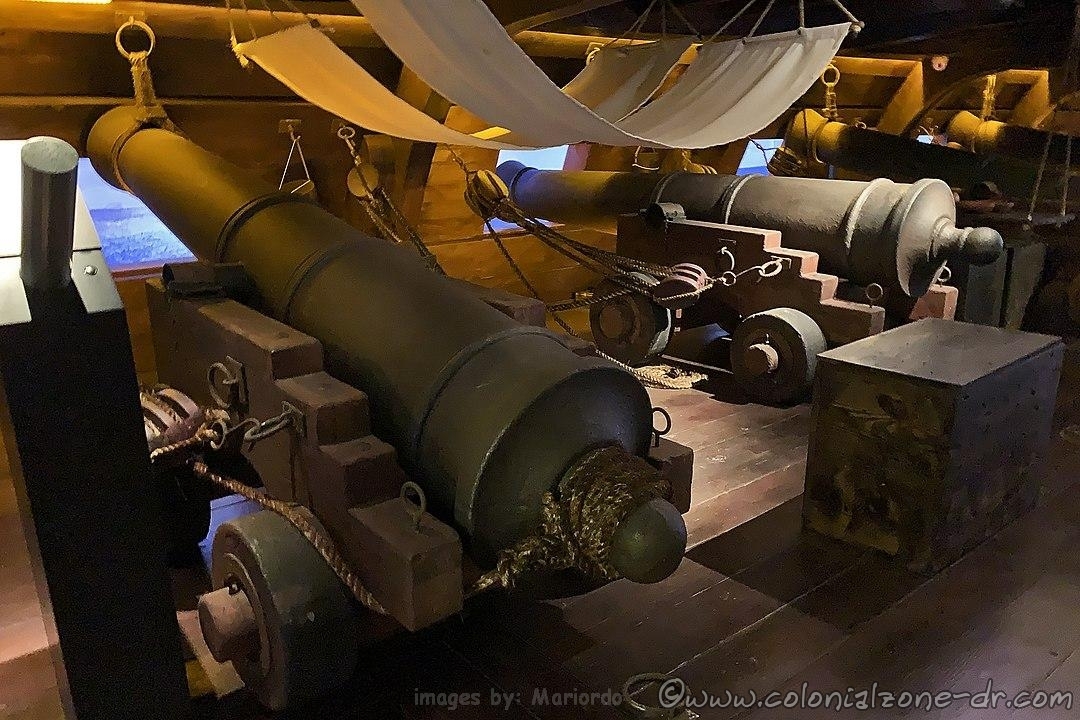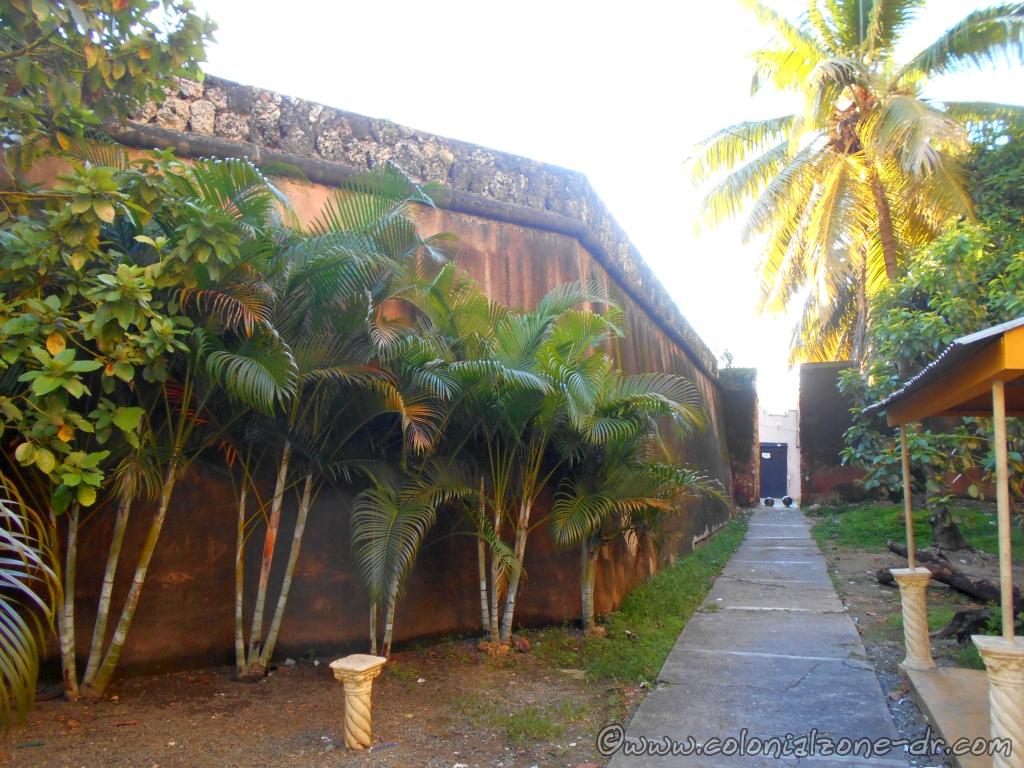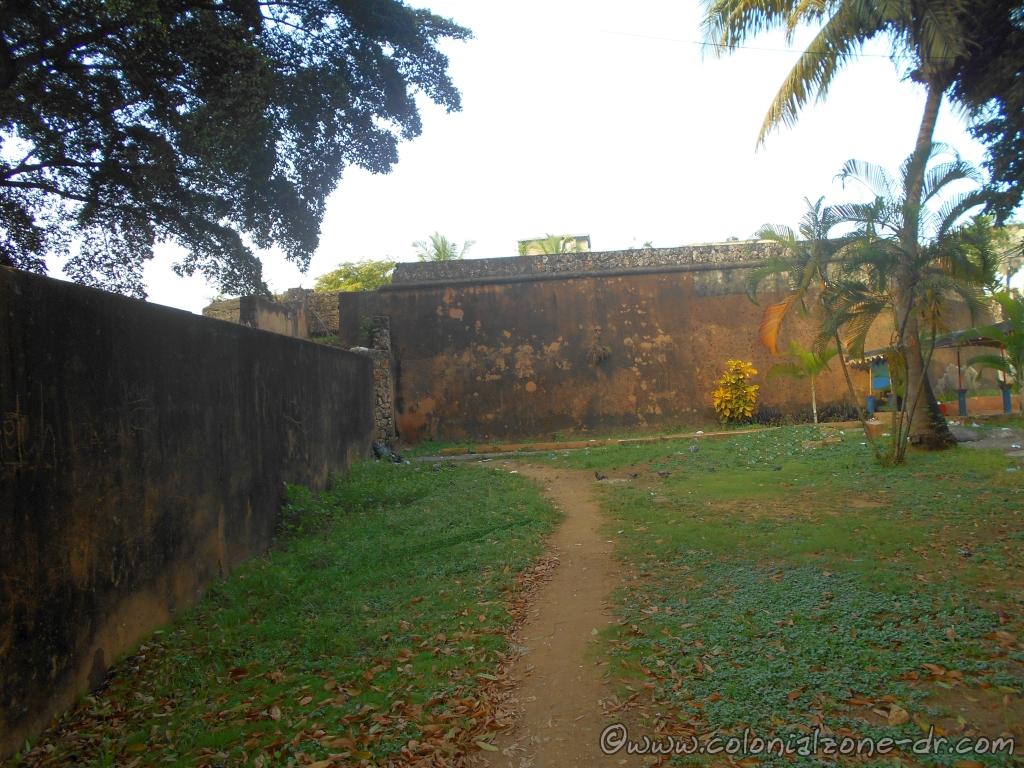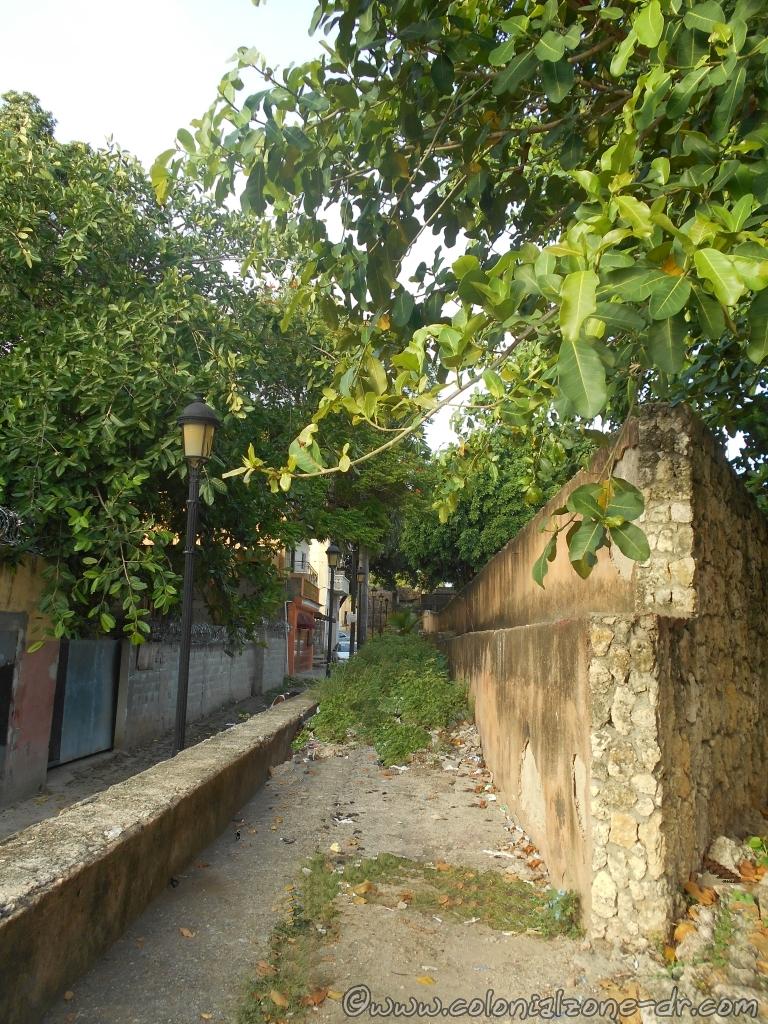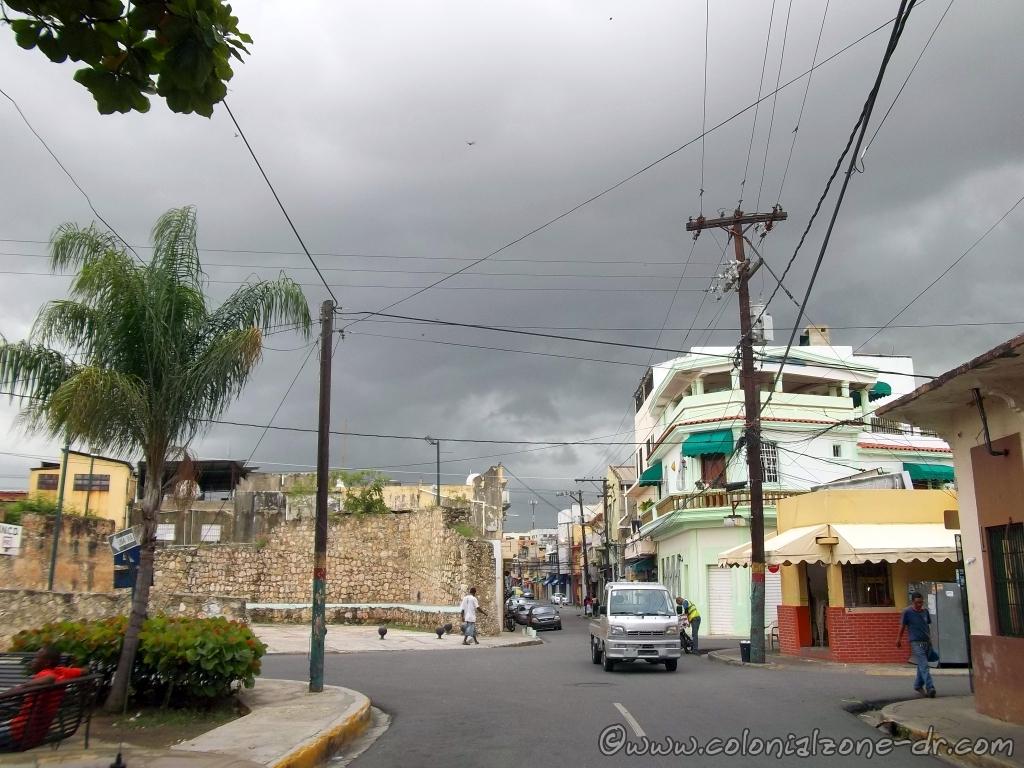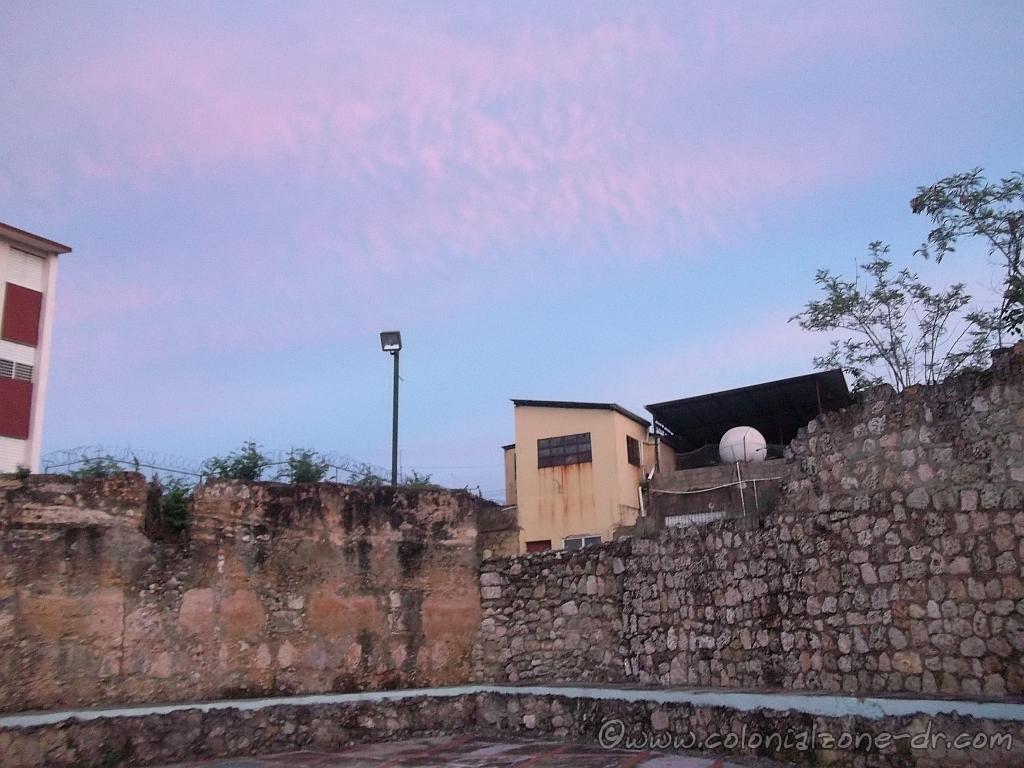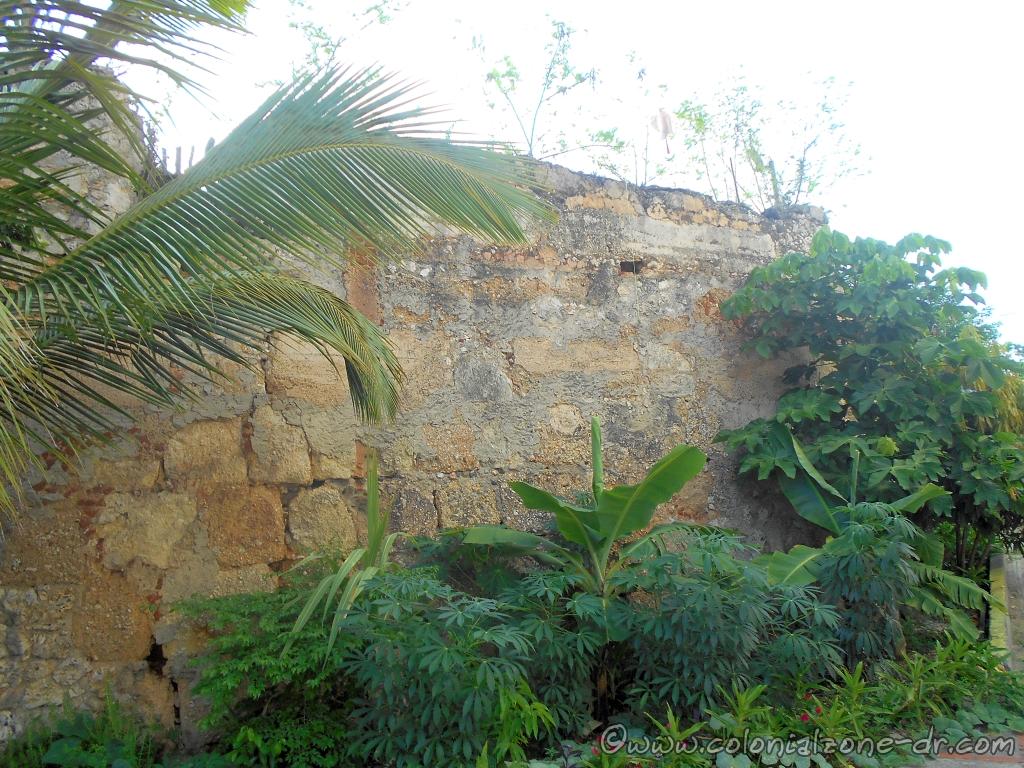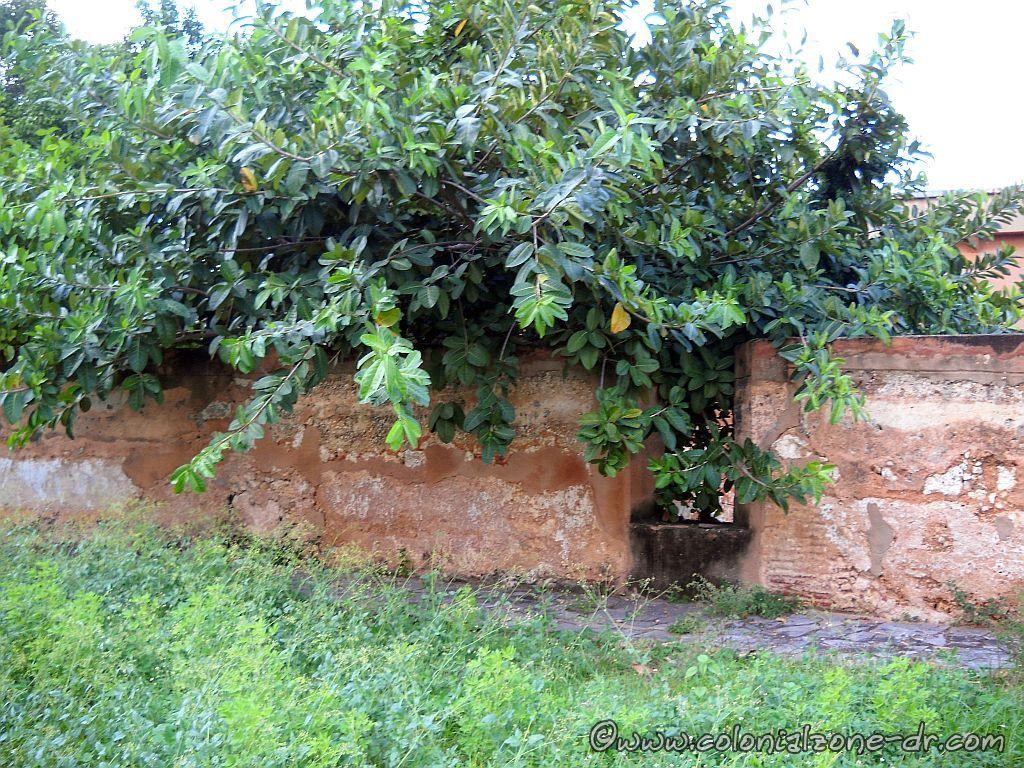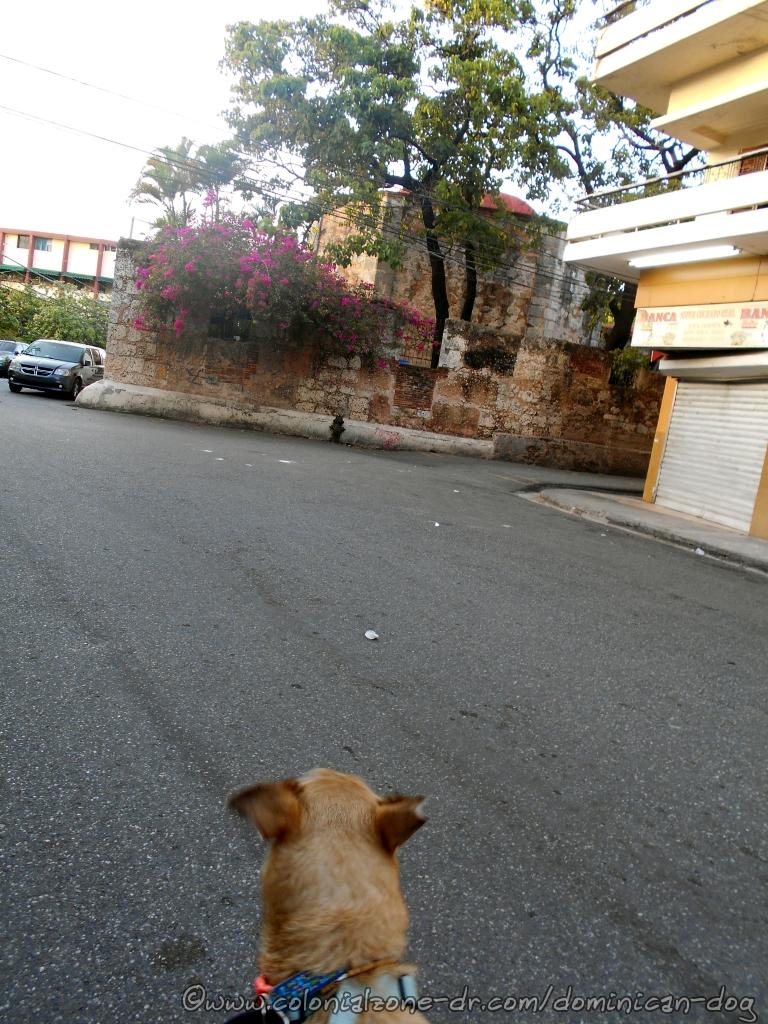Antiguo Palacio Arzobispal / Old Archbishop’s Palace
The Antiguo Palacio Arzobispal / Old Archbishop’s Palace, the building has always had bad luck surrounding it. Now all that is left are memories and a few old walls.

Antiguo Palacio Arzobispal |Edificio Fundamental del Barroco Andaluz | Home of Bartolomé de las Casas | The Colegio Dominicano de la Salle | Bull Fighting | Other Uses of the Property | Location |
The Archbishop’s Palace was the residence of the Head of the Dominican Church until 1933. Many of the occupants included Archbishops Dávila, Padilla, Rodríguez, Portillo, Cocchia, Meriño and Nouel.
The old Archbishops Palace, once a beautiful colonial house, was run-down and in very bad condition since it was abandoned after the cyclone San Zenón, in September 1930.
The Palacio Arzobispal was demolished in the 1960s. All that is left are the perimeter walls that once surrounded the property.
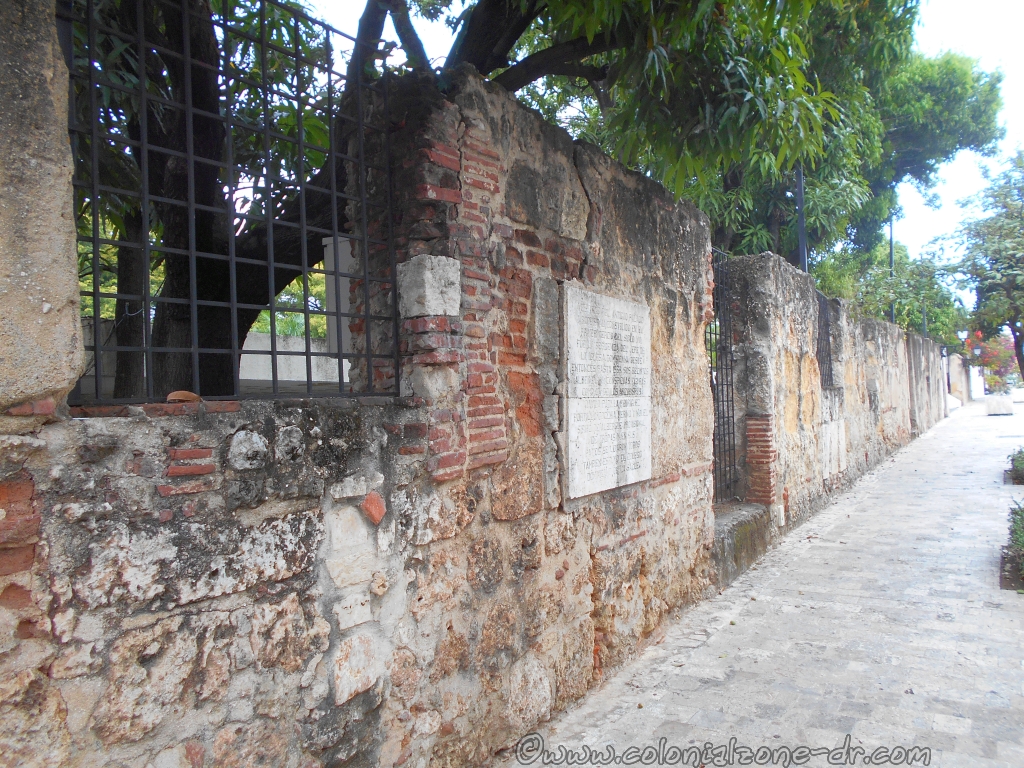
The plaque on the exterior wall reads:
“Vestigios del Antiguo Palacio Arzobispal construido en el primer tercio del siglo XVI. Fue la residencia del Jefe de la Iglesia Dominicana desde entonces hasta 1933. Sus recintos albergaron conspicuas figuras como la de los Arzobispos Dávila, Padilla, Rodríguez, Portillo, Cocchia, Meriño y Nouel. Sirvió de Albergue provisional de tropas y en sus patios se lidiaron toros. También estuvo el Colegio Dominicano de la Salle.”
English translation:
Vestiges of the Old Archbishop’s Palace built in the first third of the 16th century. It was the residence of the Head of the Dominican Church from then until 1933. Its enclosures housed conspicuous figures such as that of the Archbishops Dávila, Padilla, Rodríguez, Portillo, Cocchia, Meriño and Nouel. It served as temporary shelter for troops and bullfights were often held in its courtyards. The Dominican College of La Salle was also located here.
Edificio Fundamental del Barroco Andaluz
The original building, known as Edificio Fundamental del Barroco Andaluz, was built in the early 18th century (1700’s), by Diego Antonio Díaz. It almost completely disappeared in a fire but was later repaired. It was rebuilt and used as the Archbishop’s Palace, The Colegio Dominicano de la Salle, a bullfighting ring. It is now home to businesses, homes, a parking garage and a plaza. (*Andalusian architecture envelopes both Roman and Islamic design that dates back to 218 BC and 711 AC. The design has vaulted ceilings, pebbled courtyards, painted tiles, water features and century-old stone walls. And the Baroque style of architecture is very ornate and elaborate)
Home of Bartolomé de las Casas

Part of the original property was the home of Bartolomé de las Casas who was given the land as an encomienda (Spanish royal land grant). He was also given many indigenous peoples as slaves, which he later denounced. He is the symbol of justice and the fight for human rights in Latin America. More history of Bartolomé de las Casas.
The Colegio Dominicano de la Salle
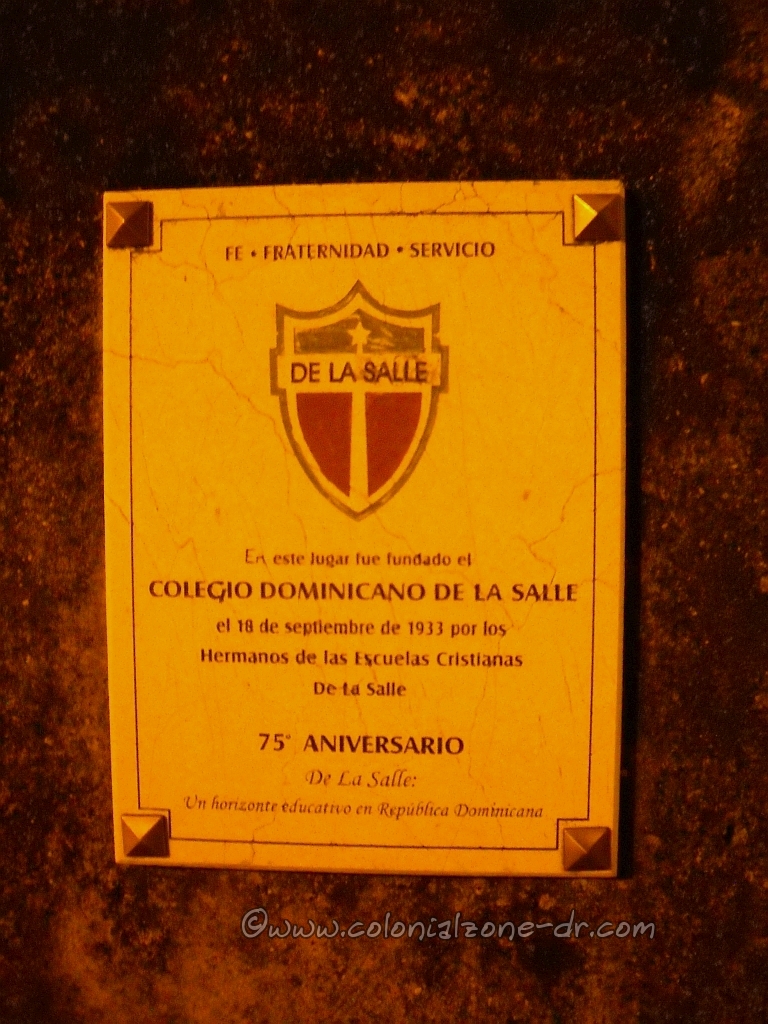
Monsignor Adolfo Nouel had a dream of a school in the Dominican Republic. He heard of the La Salle brothers school that was located in Cuba. He went to visit them in 1908 to ask them to come and take over the school Padre Fantino de La Vega. Finally, in July 1933, some of the Brothers La Salle came and opened the Dominican College of La Salle in Santo Domingo.
They were offered the old property of the Palace Archbishopric. The property was destroyed when Cyclone San Zenón hit Dominican Republic in September 1930. It was abandoned by the Archbishop’s Palace when they moved to the new location. All that was left was a dilapidated colonial house and the land. The brothers did what they could to repair the old colonial home as they worked on a more modern building. The Colegio Dominicano de la Salle opened its doors on September 18, 1933.
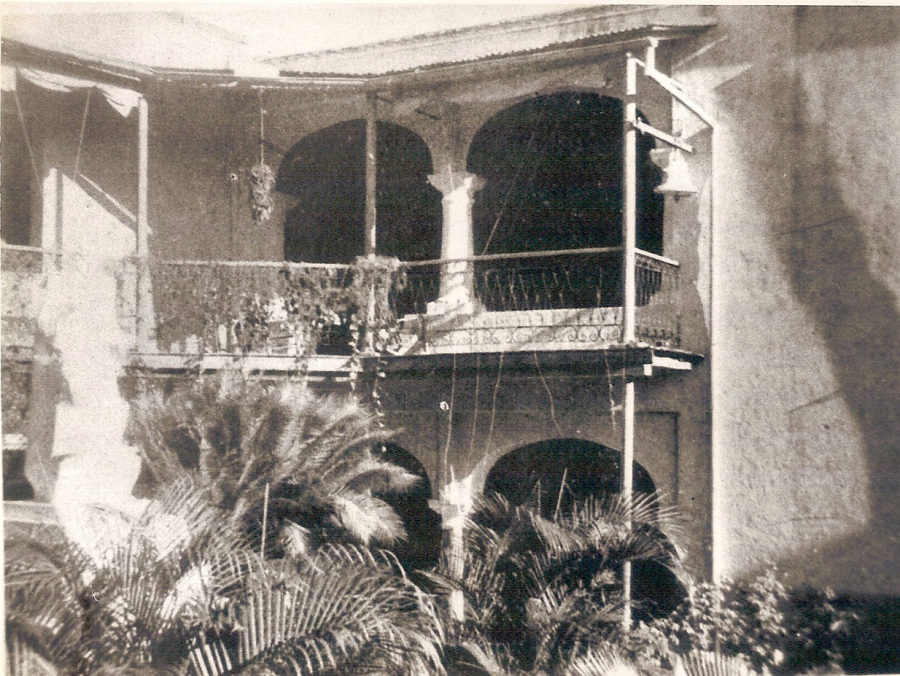
The refurbished mansion held classrooms, a chapel, commissary, and other necessary buildings. There were also recreation areas. As the school grew they needed more space and they added the house located on Calle Hostos to the school properties. Today the Dirección Nacional de Patrimonio Monumental is located in this house.
Today Colegio La Salle has schools in more than 80 countries. The current location of the Colegio Dominicano de la Salle is on Av. Bolivar in Gazcue, Santo Domingo
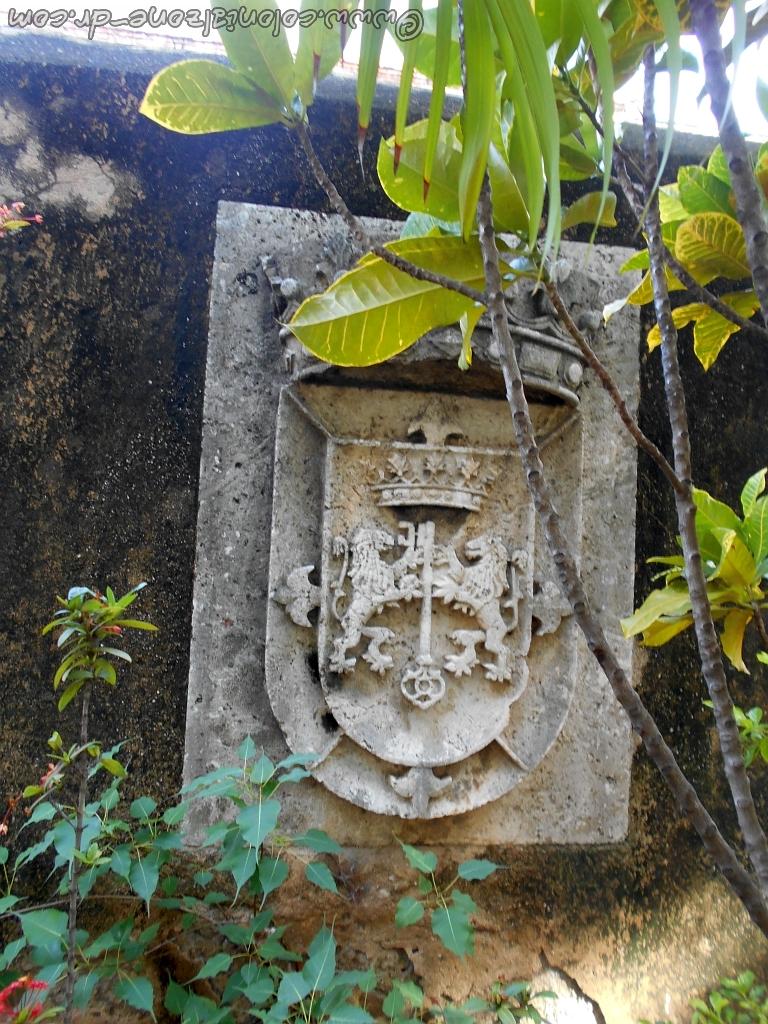
About the Escudo de Armas de la Ciudad de Santo Domingo.
About Juan Bautista de La Salle
The original founder of the school is French priest San Juan Bautista de La Salle. He was born into a rich French family of lawyers. He started teaching poor underprivileged youth. La Salle was ordained as a priest on April 9, 1678. La Salle renounced all his assets in 1683, and a year later founded the Congregación de Los Hermanos Cristianos / Congregation of Christian Brothers. De La Salle and the Brothers succeeded in creating a network of quality schools where they taught children for free according to their levels of education and learning abilities. La Salle was the first to organize teacher training centers, learning schools for criminals, technical schools, secondary schools for modern languages, arts and sciences. His work spread very quickly in France, and after his death, his work spread all over the world. Juan Bautista de La Salle died on April 7, 1719, just weeks before his 68th birthday. He was named the Patron Saint Patron of Christian Educators on May 15, 1950. More about San Juan Bautista de La Salle
reference – https://manueldelmonte.wordpress.com/2015/09/27/colegio-dominicano-de-la-salle/
Bull Fighting
Spanish style bullfights were often held in the courtyards of this once grand property. Many of the open plazas and homes with large courtyards in the Colonial City of Santo Domingo were locations for these games. Bull Fighting / Corridas de toros and Games of Reeds / Juego de Cañas were very popular diversions for all.
Bullfighting was very popular during the founding of Santo Domingo. From the time of Nicolás de Ovando up until the 1900s, bullfighting continued as a very popular public diversion.
In the mid-sixteenth century, bullfights and games of reeds were held in the public square or main square, located to the north of the Cathedral. There are records of bull fights being held at the Plaza del Convento de las Mercedes and Convento de Los Dominicos.
Bull Fighting / Corridas de Toros and Games of Reeds / Juego de Cañas (men mounted on horseback simulating war or combat throwing reeds that were shaped into spears or darts) were legal and could be held any time, except on Sundays and Holy Days.
Bullfights were so numerous in Santo Domingo that Archbishop Fray Domingo Fernández de Navarrete, on April 4, 1679, complained about this practice. In the Letter from Archbishop Fray Domingo Fernández de Navarrete to the King, Santo Domingo, April 4, 1679, the Archbishop wrote “The idleness of this island is the largest in the world. The bulls that are run this year go out of line, with which they promote vice and it would be enough for it to be run three or four times a year ”. The archbishop also complained that women attended these nightly events and they lasted until nine o’clock, which was much too late for women to be in the street.
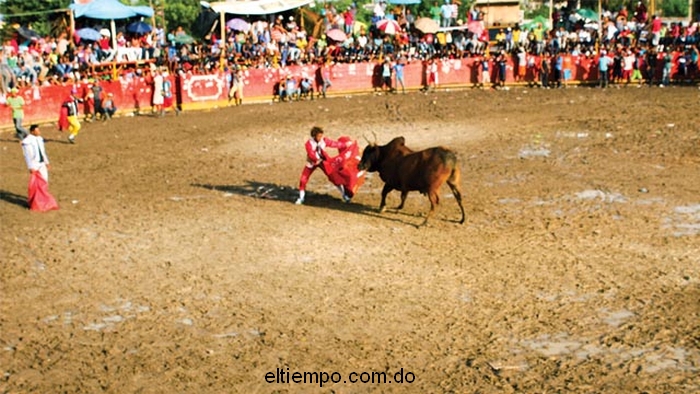
Bullfights are still held in the city of Santa Cruz de El Seibo, El Seibo province during the patron saint festivals celebrated in May. Unlike bullfights held in other parts of the world, the bulls are not hurt. There is much debate going on for and against this “cultural” practice. More about the fight against Bullfighting in Seibo https://eltiempo.com.do/abogado-pide-no-aprobar-ley-busca-declarar-corridas-de-toros-en-el-seibo-como-patrimonio-cultural/.
The animal protection laws, Ley de Protección Animal y Tenencia Responsable / Animal Protection Act and Responsible Ownership in June 2012 making animal cruelty illegal but there is still debates happening about if Bull Fighting is cruel and illegal.
Other Uses of the Property
The property was quite large taking up an entire city block. When it was abandoned it had many different uses throughout its existence.
*The mansion served as a temporary shelter for troops
*The old colonial mansion, the former seat of the Archbishop’s Palace, and the first seat of the Dominican College of La Salle, fell into ruins and was completely demolished. Now part of the property is a parking garage.
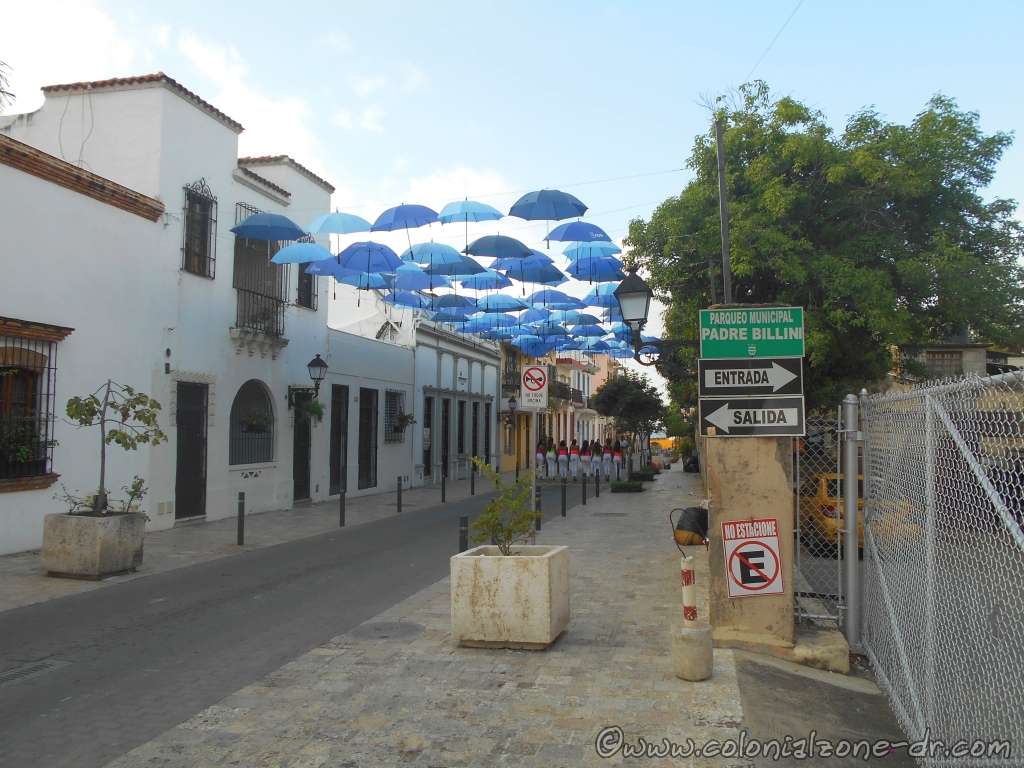
*A park, Plaza Bartolomé de las Casas was also installed on part of the property.
*The Casa de Teatro sits on part of the original property.
Location
Walking from Calle el Conde turn on Arz. Meriño at Parque Colón and head towards the Caribbean Sea. The first 4-way intersection is at Calle Padre Billini between Meriño and Hostos is the start of the original wall of the property. Calle Arz. Meriño, Padre Billini and Hostos, Cuidad Colonial, Santo Domingo, Dominican Republic.


